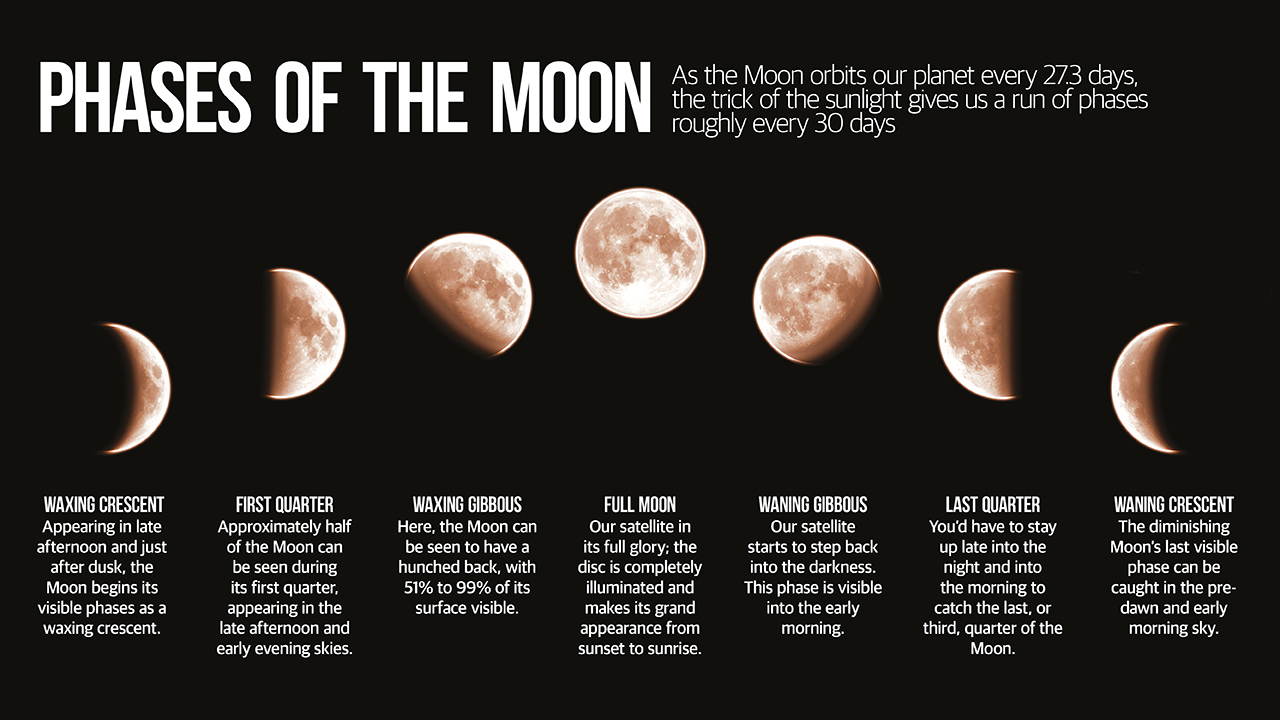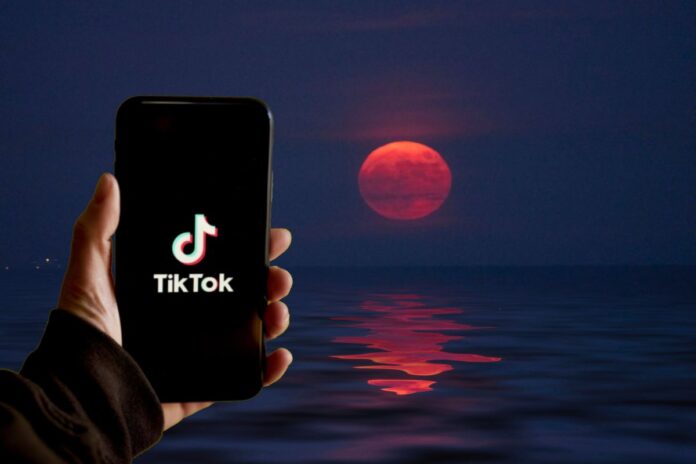A new TikTok trend suggests that users can compare the phases of the moon on the day they are born to determine if they are soulmates.
The trend continues a long association between romance and the moon and is similar in many ways to astrology, which suggests the positions of stars, planets, and the moon can influence a person’s character and even determine the course of events.
The trend works by having users slide their respective birth phases of the moon together and if that makes a complete moon then … voila! Soulmates. TikTok users are filming videos of going through this process with their partners and then uploading the results to the social media app. If this all seems sounds too good and way too simple to be true it probably is.
Related: What is the moon phase today? Lunar phases 2023
Read more: Moon facts: Fun information about the Earth’s moon
“The moon phase soulmate trend is old wine in new bottles. It’s obviously a twist on astrological sun signs but has removed some of those trappings, maybe to give it a sense of scientific legitimacy,” deputy editor of the Skeptical Inquirer science magazine and author Ben Radford, told Space.com via email. “This trend plays into magical thinking and provides some psychological comfort. This has all the hallmarks of a typical TikTok trend, including making a game out of something that is personal and relevant to users — such as a name, home city, face, or birthdate.”
Radford added that what is missing from this trend is any actual logical link between the phase of the moon and personality or relationship compatibility. “Why in the world would the phase of the moon have any connection to or effect on relationship compatibility?” he asked.
With no suggested mechanism of how the phase of the moon affects compatibility, let’s look a what crunching the numbers suggests about the moon/soulmate test.
The numbers just don’t add up
According to NASA, the moon only has eight phases (opens in new tab): new moon, waxing crescent, first quarter, waxing gibbous, full moon, waning gibbous, third quarter, and waning crescent. That means that if that’s the only selection criteria used by the method for soulmate compatibility there should only be eight real categories of people.
The method only has four possible combinations to make a “whole moon” — new moon and full moon, third quarter moon and first quarter moon, waning gibbous and waxing crescent, and waning crescent and waxing gibbous.
With an estimated 8 billion people in the world, that means if one category is only compatible with one other category, each person should have around a billion possible “soulmates.” If that’s the case, then it’s questionable why anyone would have to turn to an app to track down a soulmate in the first place.
Here’s another issue with the moon/soulmate technique: Which side of the moon a person sees illuminated during moon phases depends on which side of Earth they are on. For example, that means that for two people born on opposite sides of the world, two first-quarter moons should be a match and two third-quarter moons should be a match.
There are many stories on TikToks from loved-up moon soulmates implying that imply trend may appear to be working. This may be because happy couples that happen to get a “matching moon” are more likely to post a successful result, than people unhappy with their result who simply dismiss it and get on with their day.
“If some people return to TikTok to crow or gloat about the perfect soulmate they matched with, keep in mind that it’s not a representative sample; we’re not hearing from the millions of others for whom it didn’t work,” Radford explains.

The moon soulmate test: Science or pseudoscience?
Though astrology and astronomy share similar origins and were even united at one point, the two split long ago with astronomy helping forge the tenants of evidence-based science and astrology remaining a faith-based belief system.
Facing criticism by fans of astrology for defining the zodiac constellations using actual observations, NASA wrote in a Tumblr post (opens in new tab): “Astronomy is the scientific study of everything in outer space. Astronomers and other scientists know that stars many light-years away have no effect on the ordinary activities of humans on Earth. Astrology, meanwhile, is something else. It’s the belief that the positions of stars and planets can influence human events. It’s not considered a science.”
In a 1978 paper (opens in new tab), Canadian philosopher and cognitive scientist Paul R. Thagard argued that as astrology fails in terms of verifiability and falsifiability and because of its social and historic features, astrology is a pseudoscience.
“Even if you don’t put any stock in astrology, then you might still think this trend has some validity since it’s tied to moon phases, which are of course real and scientifically proven,” Radford told Space.com.
Radford explained that while this new spin on astrology may seem silly and inconsequential, there is a serious side to the propagation of what is essentially pseudoscience.
“For many, it may be a silly fad, but there is a darker side if people are sincerely making life decisions based on a TikTok app,” he said. “After all, since there’s no validity to it, you could be missing out on a great relationship if the moon phases don’t match — or even getting into a horrible one if they do.”
Radford pointed out that science communicators, educators and journalists can use this trend and others to their advantage as an example to talk about pseudoscience, critical thinking, and the genuinely amazing wonders of the universe.
“Believing that this app can — or even just might — help find the one perfect mate is a strong incentive for some to continue using it,” he concluded. “And for others, it’s just a bit of fun to share, until the next fad comes along!”
Follow us @Spacedotcom (opens in new tab), or on Facebook (opens in new tab) and Instagram (opens in new tab).

